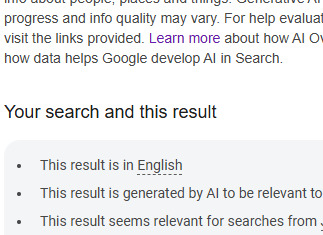#AI Code generation
Explore tagged Tumblr posts
Text
10 Powerful Projects You Can Build Using a Low Code Platform

Building brilliant apps shouldn’t be reserved for expert coders. Whether you’re a visionary startup founder, an ambitious solo entrepreneur, a small business owner, or simply someone bursting with ideas — the power to create is now in your hands, no coding degree required.
Thanks to low code platforms, you can bring your ideas to life — fast. These intuitive tools empower anyone to design apps, websites, workflows, and automation solutions with minimal programming, cutting both cost and complexity. From concept to launch, it’s all about speed, simplicity, and creativity.
In this blog, we’re diving into 10 powerful projects you can build using a low code platform, along with a spotlight on FAB Studio — an innovative application development platform that’s helping creators, businesses, and developers build smarter, faster, and better than ever.
What is a Low Code Platform?
A low code platform is a visual software development environment that allows users to create applications through graphical user interfaces and pre-built templates instead of traditional hand-coded programming. These platforms are equipped with drag-and-drop builders, pre-set logic, and automated code generation tools to speed up the development lifecycle.
While no-code tools are designed for users with zero coding knowledge, low code platforms offer more flexibility — allowing both technical and non-technical users to collaborate, build, and deploy scalable solutions.
10 Powerful Projects You Can Build Using a Low Code Platform
Let’s dive into the most impactful and practical projects you can build using a low code platform today:
1. Custom Business Dashboards
One of the most common and useful applications of low code platforms is creating custom dashboards. Whether you’re tracking sales, customer engagement, or employee performance, a low code dashboard can help you visualize real-time data from different sources.
You can integrate databases, Excel sheets, CRMs, or APIs into one clean interface and allow your team to make informed decisions. Many app builder tools offer built-in data widgets and charts that are customizable without writing a single line of code.
2. E-Commerce Stores
Gone are the days when you needed a developer to launch an online store. Using web builder capabilities in a low code platform, you can build a fully functional e-commerce site in a matter of hours. Choose from templates, add product listings, manage inventory, and even integrate payment gateways like Stripe or Razorpay — all with minimal effort.
Plus, the mobile responsiveness and SEO-friendly features ensure your store is ready for customers on any device.
3. Internal Tools and Employee Portals
Companies often need internal systems like leave trackers, task managers, and document submission forms. These tools, while simple in nature, usually take weeks to build through traditional methods.
With low code, you can create secure internal portals with role-based access control. From employee onboarding to IT support request systems, these internal tools can be customized on the go, without involving a whole development team.
4. Customer Feedback and Survey Apps
Understanding your customers is critical for business success. With a low code platform, you can build customer feedback systems or survey apps quickly. These applications can be integrated with your CRM or email marketing tools to collect insights in real-time.
You can even use code builder tools to trigger workflows based on responses, such as sending personalized emails or assigning customer queries to the right department.
5. Automated Lead Generation Funnels
Want to capture leads from social media or ads and automatically push them into your CRM? A low code platform can help you design an automated funnel where a user lands on a page, fills in a form, and the data gets sent to your sales team or email list instantly.
This eliminates the need for third-party integrations and expensive automation tools — everything is built right inside your app builder.
6. Mobile Apps for Events or Communities
Organizing an event, a conference, or even a local community group? Instead of hiring an expensive mobile app developer, use a low code app builder to create a native or hybrid app.
Add features like RSVP, push notifications, schedules, location maps, and live updates — all using pre-configured blocks. With an AI code generator built into some platforms, you can even customize functions that make your app unique.
7. Customer Support Chatbots and Ticketing Systems
Customer service is evolving, and automated support systems are the future. Using a low code development environment, you can create simple or advanced chatbots and integrate them with your website or app.
You can also build full ticketing systems where users can submit queries, track resolution progress, and receive updates — all through a centralized dashboard.
8. Blog or Content Publishing Platforms
Writers, marketers, and educators can easily build their own content platforms using web builder tools. Whether it’s a blog, tutorial site, or a full-fledged content hub with categories and search functionality, a low code platform offers you the foundation to go live fast.
You can also include newsletter signups, user registration, and comments without any complex backend setup.
9. Finance and Budget Management Tools
Budget planners, expense trackers, or invoice generators — these are tools that many businesses or individuals need. With a code generator system in low code tools, you can build financial apps with real-time data sync and calculations.
Such tools can pull in data from banks or spreadsheets and present it through intuitive interfaces. Alerts, summaries, and trend analysis dashboards can also be added easily.
10. Learning Management Systems (LMS)
Want to launch your own online course platform? Whether you’re a coach, teacher, or corporate trainer, you can use a low code platform to create an LMS without complex coding.
Features like video hosting, quizzes, assignments, certificates, and user progress tracking can be implemented using drag-and-drop builders or AI-generated code.
FAB Builder — A Game Changer in the Low Code Space
Among the many platforms offering low code development capabilities, FAB Builder stands out with its modern and developer-friendly features.
FAB Studio, the core engine behind FAB Builder, is a flexible and scalable low code platform designed to bridge the gap between simplicity and customization. It combines the best of both worlds — visual app building for non-coders and deeper control for technical users.
Here’s what makes FAB Builder different:
🔹 Powerful Page Builder
FAB Builder comes with a modern page builder that lets you design responsive layouts with a drag-and-drop interface. You can structure complex pages, integrate media, and preview your work instantly — without switching tabs.
🔹 Intelligent Code Generator
One of FAB Builder’s key strengths is its code generation engine. It automatically converts your visual designs into clean, maintainable code, helping developers extend and customize applications effortlessly.
This AI code generator significantly reduces development time while ensuring scalability.
🔹 Full-stack App Support
Unlike other limited tools, FAB Builder enables full-stack application development. That means you can manage frontend, backend, and even databases — on a single platform. Whether you’re building a CRM, ERP, or inventory system, FAB Studio supports complex workflows and integrations.
🔹 Developer + Business Friendly
FAB Builder isn’t just for designers or marketers. Developers can customize applications using advanced settings, while non-technical users can still build, iterate, and deploy solutions without writing code.
It’s a perfect collaboration tool for teams with varied technical backgrounds.
Why Use a Low Code Platform?
Using a low code platform brings multiple advantages:
Faster time to market — Build apps in days, not months.
Cost-effective — Reduce the need for large development teams.
Greater flexibility — Iterate quickly based on user feedback.
Empowerment — Allow marketers, analysts, and business owners to build tools without relying on developers.
Integration ready — Most platforms support integrations with CRMs, payment gateways, Google Sheets, Slack, etc.
Conclusion
The rise of low code platforms is democratizing technology. Whether you’re solving a business problem, launching a startup, or just testing out a new idea — there’s never been a better time to build.
With powerful tools like FAB Builder, creating web and mobile applications is no longer restricted to those who know how to code. From landing pages to LMS platforms, and chatbots to business dashboards — the possibilities are endless.
If you’ve been sitting on an idea for too long thinking it’s too technical to bring to life, try a low code platform. You might just surprise yourself with how much you can build — without writing a single line of code.
Frequently Asked Questions (FAQ)
1. What is a low code platform? A low code platform is a visual development tool that allows users to build applications quickly using drag-and-drop interfaces and minimal coding.
2. Can I build complex apps without coding knowledge? Yes, with platforms like FAB Studio, you can build powerful web and mobile apps without deep coding skills using visual tools and AI-powered code generation.
3. Is FAB Builder suitable for both developers and non-developers? Absolutely. FAB Builder is designed to support both technical and non-technical users, offering flexibility, ease of use, and customization options for everyone.
#app development#low code app development#app developers#fab builder#code generation#low code platform#AI Code generation#AI Website builder
0 notes
Text
Soham Mazumdar, Co-Founder & CEO of WisdomAI – Interview Series
New Post has been published on https://thedigitalinsider.com/soham-mazumdar-co-founder-ceo-of-wisdomai-interview-series/
Soham Mazumdar, Co-Founder & CEO of WisdomAI – Interview Series


Soham Mazumdar is the Co-Founder and CEO of WisdomAI, a company at the forefront of AI-driven solutions. Prior to founding WisdomAI in 2023, he was Co-Founder and Chief Architect at Rubrik, where he played a key role in scaling the company over a 9-year period. Soham previously held engineering leadership roles at Facebook and Google, where he contributed to core search infrastructure and was recognized with the Google Founder’s Award. He also co-founded Tagtile, a mobile loyalty platform acquired by Facebook. With two decades of experience in software architecture and AI innovation, Soham is a seasoned entrepreneur and technologist based in the San Francisco Bay Area.
WisdomAI is an AI-native business intelligence platform that helps enterprises access real-time, accurate insights by integrating structured and unstructured data through its proprietary “Knowledge Fabric.” The platform powers specialized AI agents that curate data context, answer business questions in natural language, and proactively surface trends or risks—without generating hallucinated content. Unlike traditional BI tools, WisdomAI uses generative AI strictly for query generation, ensuring high accuracy and reliability. It integrates with existing data ecosystems and supports enterprise-grade security, with early adoption by major firms like Cisco and ConocoPhillips.
You co-founded Rubrik and helped scale it into a major enterprise success. What inspired you to leave in 2023 and build WisdomAI—and was there a particular moment that clarified this new direction?
The enterprise data inefficiency problem was staring me right in the face. During my time at Rubrik, I witnessed firsthand how Fortune 500 companies were drowning in data but starving for insights. Even with all the infrastructure we built, less than 20% of enterprise users actually had the right access and know-how to use data effectively in their daily work. It was a massive, systemic problem that no one was really solving.
I’m also a builder by nature – you can see it in my path from Google to Tagtile to Rubrik and now WisdomAI. I get energized by taking on fundamental challenges and building solutions from the ground up. After helping scale Rubrik to enterprise success, I felt that entrepreneurial pull again to tackle something equally ambitious.
Last but not least, the AI opportunity was impossible to ignore. By 2023, it became clear that AI could finally bridge that gap between data availability and data usability. The timing felt perfect to build something that could democratize data insights for every enterprise user, not just the technical few.
The moment of clarity came when I realized we could combine everything I’d learned about enterprise data infrastructure at Rubrik with the transformative potential of AI to solve this fundamental inefficiency problem.
WisdomAI introduces a “Knowledge Fabric” and a suite of AI agents. Can you break down how this system works together to move beyond traditional BI dashboards?
We’ve built an agentic data insights platform that works with data where it is – structured, unstructured, and even “dirty” data. Rather than asking analytics teams to run reports, business managers can directly ask questions and drill into details. Our platform can be trained on any data warehousing system by analyzing query logs.
We’re compatible with major cloud data services like Snowflake, Microsoft Fabric, Google’s BigQuery, Amazon’s Redshift, Databricks, and Postgres and also just document formats like excel, PDF, powerpoint etc.
Unlike conventional tools designed primarily for analysts, our conversational interface empowers business users to get answers directly, while our multi-agent architecture enables complex queries across diverse data systems.
You’ve emphasized that WisdomAI avoids hallucinations by separating GenAI from answer generation. Can you explain how your system uses GenAI differently—and why that matters for enterprise trust?
Our AI-Ready Context Model trains on the organization’s data to create a universal context understanding that answers questions with high semantic accuracy while maintaining data privacy and governance. Furthermore, we use generative AI to formulate well-scoped queries that allow us to extract data from the different systems, as opposed to feeding raw data into the LLMs. This is crucial for addressing hallucination and safety concerns with LLMs.
You coined the term “Agentic Data Insights Platform.” How is agentic intelligence different from traditional analytics tools or even standard LLM-based assistants?
Traditional BI stacks slow decision-making because every question has to fight its way through disconnected data silos and a relay team of specialists. When a chief revenue officer needs to know how to close the quarter, the answer typically passes through half a dozen hands—analysts wrangling CRM extracts, data engineers stitching files together, and dashboard builders refreshing reports—turning a simple query into a multi-day project.
Our platform breaks down those silos and puts the full depth of data one keystroke away, so the CRO can drill from headline metrics all the way to row-level detail in seconds.
No waiting in the analyst queue, no predefined dashboards that can’t keep up with new questions—just true self-service insights delivered at the speed the business moves.
How do you ensure WisdomAI adapts to the unique data vocabulary and structure of each enterprise? What role does human input play in refining the Knowledge Fabric?
Working with data where and how it is – that’s essentially the holy grail for enterprise business intelligence. Traditional systems aren’t built to handle unstructured data or “dirty” data with typos and errors. When information exists across varied sources – databases, documents, telemetry data – organizations struggle to integrate this information cohesively.
Without capabilities to handle these diverse data types, valuable context remains isolated in separate systems. Our platform can be trained on any data warehousing system by analyzing query logs, allowing it to adapt to each organization’s unique data vocabulary and structure.
You’ve described WisdomAI’s development process as ‘vibe coding’—building product experiences directly in code first, then iterating through real-world use. What advantages has this approach given you compared to traditional product design?
“Vibe coding” is a significant shift in how software is built where developers leverage the power of AI tools to generate code simply by describing the desired functionality in natural language. It’s like an intelligent assistant that does what you want the software to do, and it writes the code for you. This dramatically reduces the manual effort and time traditionally required for coding.
For years, the creation of digital products has largely followed a familiar script: meticulously plan the product and UX design, then execute the development, and iterate based on feedback. The logic was clear because investing in design upfront minimizes costly rework during the more expensive and time-consuming development phase. But what happens when the cost and time to execute that development drastically shrinks? This capability flips the traditional development sequence on its head. Suddenly, developers can start building functional software based on a high-level understanding of the requirements, even before detailed product and UX designs are finalized.
With the speed of AI code generation, the effort involved in creating exhaustive upfront designs can, in certain contexts, become relatively more time-consuming than getting a basic, functional version of the software up and running. The new paradigm in the world of vibe coding becomes: execute (code with AI), then adapt (design and refine).
This approach allows for incredibly early user validation of the core concepts. Imagine getting feedback on the actual functionality of a feature before investing heavily in detailed visual designs. This can lead to more user-centric designs, as the design process is directly informed by how users interact with a tangible product.
At WisdomAI, we actively embrace AI code generation. We’ve found that by embracing rapid initial development, we can quickly test core functionalities and gather invaluable user feedback early in the process, live on the product. This allows our design team to then focus on refining the user experience and visual design based on real-world usage, leading to more effective and user-loved products, faster.
From sales and marketing to manufacturing and customer success, WisdomAI targets a wide spectrum of business use cases. Which verticals have seen the fastest adoption—and what use cases have surprised you in their impact?
We’ve seen transformative results with multiple customers. For F500 oil and gas company, ConocoPhillips, drilling engineers and operators now use our platform to query complex well data directly in natural language. Before WisdomAI, these engineers needed technical help for even basic operational questions about well status or job performance. Now they can instantly access this information while simultaneously comparing against best practices in their drilling manuals—all through the same conversational interface. They evaluated numerous AI vendors in a six-month process, and our solution delivered a 50% accuracy improvement over the closest competitor.
At a hyper growth Cyber Security company Descope, WisdomAI is used as a virtual data analyst for Sales and Finance. We reduced report creation time from 2-3 days to just 2-3 hours—a 90% decrease. This transformed their weekly sales meetings from data-gathering exercises to strategy sessions focused on actionable insights. As their CRO notes, “Wisdom AI brings data to my fingertips. It really democratizes the data, bringing me the power to go answer questions and move on with my day, rather than define your question, wait for somebody to build that answer, and then get it in 5 days.” This ability to make data-driven decisions with unprecedented speed has been particularly crucial for a fast-growing company in the competitive identity management market.
A practical example: A chief revenue officer asks, “How am I going to close my quarter?” Our platform immediately offers a list of pending deals to focus on, along with information on what’s delaying each one – such as specific questions customers are waiting to have answered. This happens with five keystrokes instead of five specialists and days of delay.
Many companies today are overloaded with dashboards, reports, and siloed tools. What are the most common misconceptions enterprises have about business intelligence today?
Organizations sit on troves of information yet struggle to leverage this data for quick decision-making. The challenge isn’t just about having data, but working with it in its natural state – which often includes “dirty” data not cleaned of typos or errors. Companies invest heavily in infrastructure but face bottlenecks with rigid dashboards, poor data hygiene, and siloed information. Most enterprises need specialized teams to run reports, creating significant delays when business leaders need answers quickly. The interface where people consume data remains outdated despite advancements in cloud data engines and data science.
Do you view WisdomAI as augmenting or eventually replacing existing BI tools like Tableau or Looker? How do you fit into the broader enterprise data stack?
We’re compatible with major cloud data services like Snowflake, Microsoft Fabric, Google’s BigQuery, Amazon’s Redshift, Databricks, and Postgres and also just document formats like excel, PDF, powerpoint etc. Our approach transforms the interface where people consume data, which has remained outdated despite advancements in cloud data engines and data science.
Looking ahead, where do you see WisdomAI in five years—and how do you see the concept of “agentic intelligence” evolving across the enterprise landscape?
The future of analytics is moving from specialist-driven reports to self-service intelligence accessible to everyone. BI tools have been around for 20+ years, but adoption hasn’t even reached 20% of company employees. Meanwhile, in just twelve months, 60% of workplace users adopted ChatGPT, many using it for data analysis. This dramatic difference shows the potential for conversational interfaces to increase adoption.
We’re seeing a fundamental shift where all employees can directly interrogate data without technical skills. The future will combine the computational power of AI with natural human interaction, allowing insights to find users proactively rather than requiring them to hunt through dashboards.
Thank you for the great interview, readers who wish to learn more should visit WisdomAI.
#2023#adoption#agent#agents#ai#AI AGENTS#ai code generation#AI innovation#ai tools#Amazon#Analysis#Analytics#approach#architecture#assistants#bi#bi tools#bigquery#bridge#Building#Business#Business Intelligence#CEO#challenge#chatGPT#Cisco#Cloud#cloud data#code#code generation
0 notes
Text
“Slopsquatting” in a nutshell:
1. LLM-generated code tries to run code from online software packages. Which is normal, that’s how you get math packages and stuff but
2. The packages don’t exist. Which would normally cause an error but
3. Nefarious people have made malware under the package names that LLMs make up most often. So
4. Now the LLM code points to malware.
https://www.theregister.com/2025/04/12/ai_code_suggestions_sabotage_supply_chain/
#slopsquatting#ai generated code#LLM#yes ive got your package right here#why yes it is stable and trustworthy#its readme says so#and now Google snippets read the readme and says so too#no problems ever in mimmic software packige
14K notes
·
View notes
Text
Tech Tip: Embracing AI for Everyday Efficiency
Introduction Discover how Artificial Intelligence is revolutionizing daily tasks and enhancing productivity across various fields. In the rapidly evolving digital landscape, Artificial Intelligence (AI) has become a cornerstone of innovation and efficiency. From generating code snippets to optimizing website content, AI tools are transforming the way we work and live. This tech tip explores how…
#AI#AI Applications#AI Code Generation#AI for Content Creation#AI in Business#AI in Daily Life#AI Innovation#AI Tools for SEO#AI Trends#Artificial Intelligence Benefits#ChatGPT#Everyday Efficiency#Google&039;s Gemini AI#Tech Tips#Uvalde Computer Repair
0 notes
Text




Kallen Kozuki ❤️❤️
Anime: Code Geass
More on my Patreon !!
#ai art#ai artwork#ai generated#anime and manga#ai girl#ai image#ai#ai waifu#waifu#manga#anime ai#anime art#anime#cute anime girl#artwork#aiartwork#ai artist#manga ai#illustration#code geass#kallen kozuki#kallen stadtfeld#kallen code geass#kallen
236 notes
·
View notes
Text

OH MY GODDDDD I CANT BREATHE
#it’s pulsing her name in morse code#no she’s ai generated there’s like no fucking way#courtney eaton#lottie matthews#yellowjackets
49 notes
·
View notes
Text
I don't like that the dev community picks on people who are most fluent in Python, when the ChatGPT-using "vibe coders" are right there. At least Python babies are coding. Bully the non-coders instead.
#coding#programming#anyone that doesn't know 'vibe coding' means they asked ChatGPT to write code for them.#Same concept as 'I am a creative bc an LLM regurgitated an output for me'. 'I am an artist bc I told a machine to paint for me.'#programmer#I don't know if people even use that phrase anymore to be honest I feel like it's fallen out of use in favour of engineer or developer#ai bullshit#like. If they hire anyone that actually does know the first thing about coding in favour of a prompt engineer (so-called engineer)#they are going to realise—to costs to the tune of millions—that you can't 'vibe code' your way out of security vulnerabilities. Idiots.#I think we're a good few years out from that since anyone that still has a dev team (i.e. everyone; yes even Salesforce*) realises that#letting a text generator run your business would be MADNESS. That's not gonna happen until the AI snakeoil salesmen manage to gradually#lower everyone's standards of accuracy; security and objectivity. When that happens we're all fucked#(*https://www.salesforceben.com/salesforce-will-hire-no-more-software-engineers-in-2025-says-marc-benioff/#tl;dr salesforce snakeoi— CEO says no more software devs; our AI is sophisticated enough.#Balls it is.)#software engineering#programmer humor#etc etc
45 notes
·
View notes
Text
"the reason adrien is just instantly good at everything he tries is because he is programmed to be that way as a senti" aside from the fact that i don't think that's how it works (and also while he was decent at everything he tried with marinette he wasn't instantly good at all of them, and what marinette actually said to him was that he could improve in anything with practice but it was a great first attempt) did we all collectively forget about how adrien actually canonically isn't the best singer?

#adrien agreste#miraculous#miraculous ladybug#ml s6 spoilers#ml season 6#ml climatiqueen#miraculous spoilers#ml spoilers#actually never saw that episode in french so maybe the french voice actor did a better job idk but given that adrien doesn't#usually sing for kitty section or ever the way i saw it was he used his poetry writing skills to write a song#and as a songwriter he was probably great but being a good lyricist doesn't make you a great singer obviously#so to me that's what his deal is#i actually like that throughout this show adrien has some things he picks up easily and some things he has to work on and might never do as#well as people with more experience#i also think as a kids show the lesson they want to put out is anyone can improve with effort and attempt#like he fumbled that science lab experiment but enjoys particle physics#languages tend to come easily to him precisely because it's been something he was forced to do since he was young#a lot of polygots especially if they start young develop skills and see linguistic patterns and iirc he already knew some#japanese from anime and his familiarity with mandarin should help#but i love that he took it further and took on morse code like the cute nerd he is#and now he's studying ancient greek for fun??? what a cute#marinette says his macarons tasted fine but we saw him struggle with the creme#what i mean to say is#he has discipline (basically second nature now) and dedication so he can do well but it DOES require effort#and i think it dismisses how much adrien TRIES or the fact that a lot of skills he was taught to have since a young age aid him#and i just don't think all sentis are “perfect” in an AI robotic way (even if that's how their parents wished they were)#it also just lessens his humanity and iirc the writers have stated multiple times that they are still human#(we can discuss how inconsistent ml is about sentis in general but eh idc for that conversation tbh agdhsjsjks)#anyway adrien will forever be#my nerdy son i love him so much
47 notes
·
View notes
Text
AI Concept Art of my Fan Story: STAR WARS SEEDS OF HOPE: What Happened on Cato Neimoidia. Introducing my original character First 2 chapters are up. Check out the story here.

#adhd#obi wan kenobi#star wars#storyteller#ai generated#actually autistic#archive of our own#autistic coded character#the clone wars#andor#neurodivergent
37 notes
·
View notes
Text
where is the gtfo button on this omg

STOP IT GO AWAY *bug spray*

guys help ive removed the gemini shortcut (thank u sir) but im still getting this when i look stuff up. help :')
#what do yall#gemini#ew#fuck generative ai#google stop giving me dumb articles i want the disable button#hand it over before i rip it out from between your lines of code
31 notes
·
View notes
Text





CHAVFORMATION is waiting
#chav transformation#chav tf#chavambrose#chavformation#chavtf#gay chav#chavvy#ambrosifukation#ambrose#me and my tist#hypnotised#jockification#jocknotized#gay hypnosis#hypnotized#ai generated#jock tf#broification#himbofication#himbro#gayhot#gay#bro fuck#brofukation#bro code#bros#gay hypnotized#hypnotic#hypnoslut#male hypnosis
23 notes
·
View notes
Text



Support Artists Not AI bracelet now in my shop!
Are you tired of AI slop invading your favorite creative spaces? Do you yearn for the days when art was considered to be a byproduct of the human creative process instead of code? Me too, man, me too.
#magic code in the comments#art#artists on tumblr#artists#digital art#AI#anti ai#generative ai is theft#human artist#generative ai#ai art#fandom#mintjuliee's designs#support artists#artificial intelligence#ai is theft#ai is not art#character design#landscape#ai bullshit#painting#anti generative ai#genai#P.S. if you all would like a Support Writers version of this in the future let me know 👌
19 notes
·
View notes
Text
I spent five years coming up with unique ways to photograph the same group of plushies to help tell a story.
You don't need AI to help you be creative, you're just being lazy and want brain chemicals without doing any of the work or respecting the people who put time and effort into it.
#if i could develop a compelling narrative with a Pikachu plush and an Eevee i found at a Goodwill#you can do better than an algorithm#being creative is difficult but that's part of what makes it rewarding!#don't let the slop machine have your imagination algorithms have already taken so much from you#full disclosure i actually DO use Perplexity as an add on to Google and sometimes i have it help me with code#i do think having a computer assist you with creating automation can be good!#there ARE good AI tools - at least on paper#there's the whole power consumption thing which is...not great and i do admit i might not be blameless for that reason#but as an alternative for daydreaming?#GO MAKE YOUR OWN#it's okay if it's derivative sometimes!#you're not an impostor unless you're actively stealing from creatives#and you'll never guess what image generation does#it's not even generation actually it's just rehashing#anyways DeviantArt is essentially unusable now#i want real creativity please no more LLM trash thank you#artists deserve more respect#and i hope Microsoft is punted directly into the Sun
11 notes
·
View notes
Text
Nah theyre forcing us to use AI for a fucking school project

#sunflower rambles#my demise has arrived......fuck my life...#as someone who NEVER used generative AI before#not even when it created funny weird images#this is so sad. i get its for an app but like#dude an app that used AI to “identify plants and insects” is NOT gonna be reliable#WHY IS EVERYONE IN THIS COUNTRY SO STUPID ARRRTGGHTHHRHTHHTJYK#how do they not understand 😭😭😭#listening to this mf yapping about AI for 2 hours was like being forced into torture#id rather make an app that requires tough coding than use this shit#anyways im gonna jump off this building now
17 notes
·
View notes
Text





Kallen Kozuki ❤️❤️
Code Geass
More on my Patreon !!
#ai art#ai artwork#ai generated#anime and manga#ai girl#ai image#ai#ai waifu#waifu#manga#anime ai#anime art#anime#cute anime girl#artwork#aiartwork#ai artist#manga ai#illustration#code geass#kallen kozuki#kallen stadtfeld#kallen code geass#kallen#animewaifu#waifus#waifuanime#waifumaterial
147 notes
·
View notes